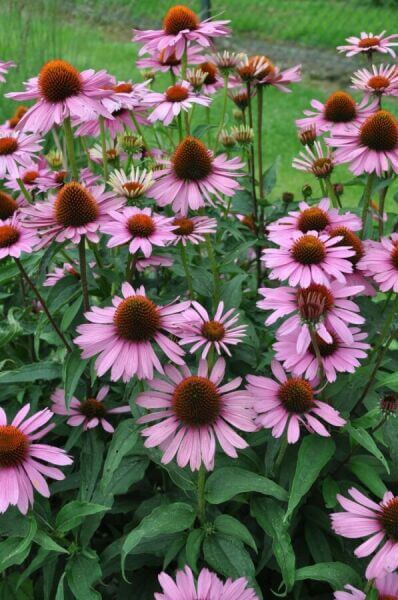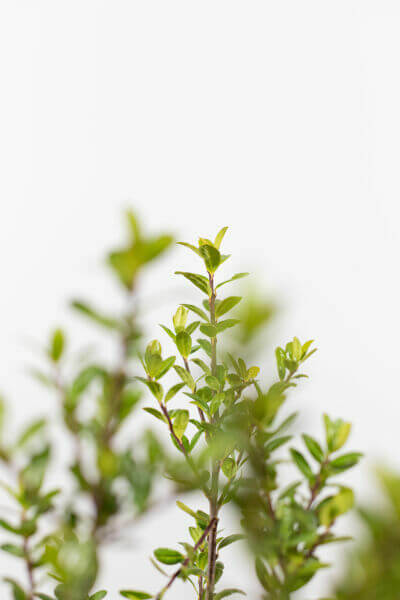Hedge Plants For Sandy Soil
Hedge Plants For Sandy Soil
Blog Article
Hedging Plants For Butterfly Gardens
Boost your garden's appeal with lavish hedge varieties such as Yew (Taxus), Thuja, Laurel, Photinia, and Bamboo, commemorated for their structural stability and ecological benefits.
Yew and Thuja offer evergreen coverage and winter resilience, while Laurel offers fast development and broad, fragrant leaves.
Photinia includes seasonal charm with its lively red foliage, and Bamboo lends a low-maintenance, peaceful atmosphere.
These hedges improve air quality, lower noise, and produce tranquil, personal spaces.
Proper planting, spacing, and maintenance guarantee energetic growth and eco-friendly harmony.
Explore how these rich ranges can elevate your garden's beauty and wellness.
Secret Takeaways
Change Your Garden With Lush Hedge Ranges
- Select Yew for its dense, evergreen growth and unequaled longevity.
- Choose Laurel for its quick development and broad leaves, ensuring quick personal privacy.
- Pick Photinia for its lively seasonal foliage, which turns a striking dark red.
- Utilize Bamboo for a low-maintenance, winter-hardy hedge with aesthetic appeal.
- Space plants 2-3 per meter and prune routinely for ideal development and health.
Popular Hedge Plants
When changing a garden with lavish hedge ranges, it's vital to think about popular hedge plants such as Yew, Thuja, Laurel, and Photinia due to their unique qualities and advantages.
Yew (Taxus) is extremely esteemed for its longevity and dense, green growth, making it a prime choice for withstanding landscapes.
Thuja is kept in mind for its evergreen foliage and robust winter strength.
Photinia includes seasonal vibrancy with red leaves that darken gradually, producing vibrant visual appeal.
Laurel provides fast growth and fragrant, broad leaves, perfect for fast privacy.
In Addition, Bamboo is an exceptional option for atmosphere, providing a low-maintenance, winter-hardy option that enhances the garden's visual with its sophisticated, swaying walking sticks.
These selections deal with a variety of horticultural requirements and preferences.
Benefits of Garden Hedges
Garden hedges use a plethora of advantages, making them a valuable addition to any landscape. These natural barriers are economical to execute and supply substantial wind security, enhancing air blood circulation and adding to noise decrease. The thick foliage of hedges like Thuja and Beech guarantees privacy by blocking exposure, developing a tranquil and secluded environment.
Hedges also play a crucial role in microclimate regulation, providing a steady environment that fosters plant development and reduces temperature variations. Their complex leaf structures filter pollutants, enhancing air quality and contributing to a much healthier garden community.
Additionally, hedges excel in sound reduction, soaking up and deflecting sound waves to lower ambient noise levels. This dual performance of providing both visual and acoustic personal privacy enhances the total serenity and visual appeal of any garden.
Planting and Maintenance Tips
For an effective hedge, careful preparation of the planting area is crucial. Ensure the soil has appropriate pH and drainage to support strong root advancement.
Space the plants appropriately for the selected species. Water the hedge regularly during its initial development phase, adjusting as required with seasonal modifications.
Implement a methodical bug control and disease prevention technique, utilizing organic or chemical treatments when necessary. Routinely check for aphids, termites, and fungal infections.
Apply mulch to retain moisture and reduce weeds. Seasonal pruning promotes thick development and air circulation, important for plant health.
Following these standards will assist you cultivate a lively, well-maintained hedge that improves the appeal of your garden.
Spacing and Cutting Standards
Spacing and Trimming Guidelines
Proper spacing and trimming are essential for cultivating healthy, visually appealing hedges. Sufficient spacing guarantees each plant gets adequate nutrients, light, and air flow.
Follow these standards for ideal hedge upkeep:
- Spacing: Position hedge plants 2-3 plants per meter to encourage robust growth.
- Pruning Techniques: Regular pruning is important for maintaining desired hedge height and shape. Trim new development in summer and cut down older wood throughout winter season.
- Seasonal Care: Change trimming methods and schedules according to seasonal requirements to ensure plant health.
- Hedge Height: Frequently display and cut to maintain the desired hedge height and attain consistent aesthetic appeals.
Abiding by these actions will ensure your hedge thrives, enhancing both the appeal and performance of your garden.
Selecting the Right Hedge
Choosing the Right Hedge
Picking the suitable hedge involves evaluating factors such as mature height, foliage density, and ecological strength. Effective hedge plant selection needs comprehending each species' development attributes and site-specific flexibility.
For example, Yew (Taxus) offers exceptional durability and dense development, while Thuja is notable for its winter season durability. Furthermore, considering upkeep requirements is important; fast-growing species like Laurel or Privet need regular cutting, whereas low-maintenance choices like Bamboo or Ivy may be more effective for those seeking minimal upkeep.
Environmental elements such as soil type, light availability, and moisture conditions ought to likewise guide the choice process. This cautious approach ensures the picked hedges will thrive, offering both practical and aesthetic benefits to the garden landscape.
Shipment and Planting Guidance
To guarantee your hedge plants grow, they should be provided by specialized couriers and planted immediately upon arrival.
Follow these necessary steps for successful planting:
- Soil Preparation: Enhance the soil with natural matter to improve drainage and nutrient material.
- Planting Depth: Create a trench twice the width and equal to the depth of the root ball.
- Watering Methods: Water thoroughly after planting, keeping the soil regularly moist however not filled.
- Mulching: Apply a layer of mulch to retain wetness and reduce weeds.
Customer Assistance and Service
Offered the important role of prompt support in horticultural pursuits, our customer assistance group is offered six days a week through telephone, e-mail, and social media to use professional recommendations and swiftly attend to any concerns. Their dedication to fast action times makes sure client complete satisfaction by dealing with questions related to plant health, optimum planting methods, and upkeep schedules.

Reaction Time
----------------------
This comprehensive support group, strengthened by a stellar 9.3/ 10 consumer score, highlights our commitment to boosting the gardening experience for every customer.
Often Asked Questions
The Length Of Time Does It Consider Hedge Plants to Develop?
Hedge plants typically need one to 3 years to become fully developed, with the precise duration differing by species and growing conditions.
Effective care throughout this important period is necessary for robust development. Consistent watering, vigilant weed control, and proper fertilizer application are critical in promoting strong root advancement.
For example, fast-growing species like Laurel may develop more quickly, while slower-growing ranges such as Yew may take longer. Diligent maintenance speeds up the facility process, resulting in thick and healthy hedges.
What Are the Best Hedge Plants for Personal Privacy?
The concern of the best hedge plants for privacy involves examining evergreen and deciduous options.
Evergreen hedges like Thuja, Laurel, and Cypress supply year-round protection, ensuring continuous personal privacy.
On the other hand, deciduous hedges such as Beech offer seasonal personal privacy, shedding leaves in colder months.
Key maintenance ideas for personal privacy hedges consist of routine cutting, fertilizing in spring, and correct spacing-- typically 2 to 3 plants per meter.
Additionally, consistent watering and persistent weed removal are essential for promoting healthy, dense growth.
Can Hedge Plants Draw In Wildlife to My Garden?
Yes, hedge plants can bring in wildlife to your garden by supplying vital advantages like shelter, food, and nesting websites, consequently improving local biodiversity. For example, yew, holly, and laurel are outstanding for drawing in birds, while ivy supports a variety of insects.
Nevertheless, it is necessary to keep in mind that there are some disadvantages, such as increased maintenance to manage pests and routine maintenance. Carefully selecting and keeping hedge ranges can help stabilize these drawbacks and advantages, eventually promoting a sustainable and dynamic ecosystem in your garden.
Exist Any Flowering Hedge Plants Available?
Yes, there are flowering hedge plants readily available that can enhance the appeal of your garden.
For example, Elaeagnus, also referred to as Olive Willow, produces fragrant white flowers in the fall, adding a touch of sophistication.
Photinia, another popular option, showcases lively red leaves that grow into an abundant green, developing a vibrant visual impact throughout the seasons.
To guarantee these plants flourish, it's important to practice appropriate pruning techniques and seasonal maintenance, such as cutting brand-new development in the summertime and cutting back in the winter.
These measures will help preserve the health and visual appeal of your blooming hedges.
How Do I Avoid Bugs in My Hedge Plants?
To avoid pests check here in hedge plants, employ natural pest control methods and maintain proper hedge care. Introduce useful bugs like ladybugs, which take advantage of hazardous insects, to produce a balanced community.
Routinely examine your hedges for signs of invasion and without delay get rid of any afflicted parts to avoid the spread. Make sure the health of your hedges by using well balanced fertilizers and supplying appropriate water.
Use mulching to keep soil moisture and proper spacing to reduce plant tension and promote robust development. These practices jointly help in reducing pest concerns and keeping a healthy hedge.
Conclusion
In essence, selecting the best hedge varieties such as Yew, Thuja, and Laurel can transform any garden into a serene sanctuary. These plants provide year-round greenery, enhance aesthetic appeal, and deal useful benefits like noise decrease and wind defense.
Appropriate planting techniques, precise spacing, consistent watering, and seasonal trimming are vital for optimum development.
Reliable delivery services and expert consumer support ensure a smooth experience from purchase to planting, making it simpler than ever to elevate your outside area.
Garden hedges provide a multitude of advantages, making them a valuable addition to any landscape. These natural barriers are cost-effective to execute and provide considerable wind protection, boosting air circulation and contributing to sound reduction. The thick foliage of hedges like Thuja and Beech ensures personal privacy by blocking exposure, developing a secluded and peaceful environment.

Pruning Strategies: Routine pruning is essential for maintaining preferred hedge height and shape. Cut new growth in summertime and cut back older wood during winter.
Report this page